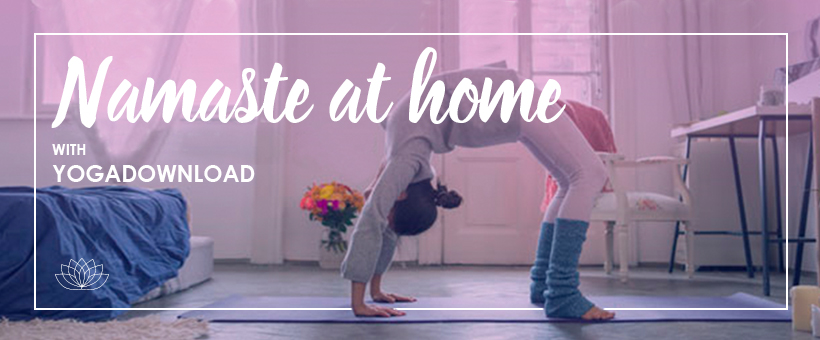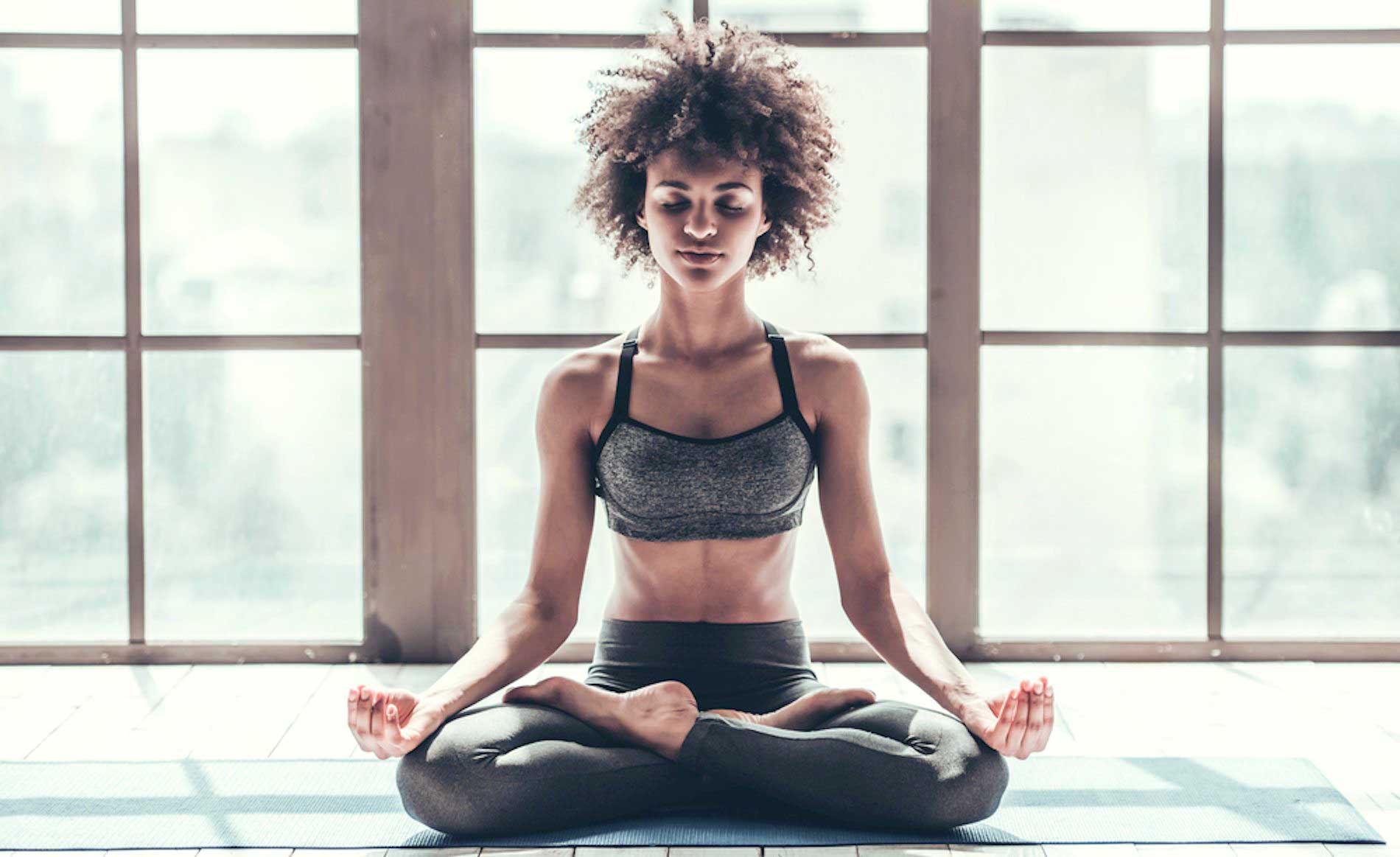Padmasana
The Lotus position has the power to calm your nerves, awaken your energy and calm your mind. It is a cross-seated asana from meditative practices of ancient India, in which the feet are placed on opposite thighs.
It is a well-established posture commonly used for meditation in the contemplative traditions of Yoga, Jain and Buddhism. It is said that the asana resembles a lotus, encourages breathing through an associated meditative practice and promotes physical stability. The Lotus is an extremely powerful pose, especially for women, that connects mind, body and spirit, one of the ultimate goals of yoga.
When you feel uncomfortable or anxious, there is nothing like turning to one of the essential poses of yoga, the Padmasana. Considered by many to be an archetype of the yoga posture, the arrangement of hands and feet in this asana is reminiscent of the petals of a lotus flower, a flower that reminds us of it, growing out of its muddy base to rise, immaculate, above the water and open up to the sun.
The image is nothing less than a metaphor for the development process of yoga.
A lotus is rooted in the mud, and when it grows, it blossoms into a beautiful flower, in the same way, when a person begins yoga, they are rooted in the mud as part of the earthly world. But as he progresses, he opens himself spiritually.
THE HUMBLE ORIGINS OF LOTUS
The lotus, or padma in Sanskrit, is a powerful symbol that transcends time and religion.

Over the centuries, the flower has symbolized a variety of states, including enlightenment, detachment, cosmic renewal and rebirth, purity, beauty, and spiritual and material wealth.
This recognizable flower plays an important role in the creation history of ancient Egypt and India. It is also a symbol commonly used in Hindu iconography, associated with many powerful deities. Lakshmi (the goddess of abundance) is often depicted sitting on an open lotus and holding another in her hand.
The same is true of Ganesh, the destroyer of elephant-headed obstacles, and Lord Vishnu, who is said to represent the principle of preservation in the universe. And tradition has it that wherever the Buddha walked, lotus flowers bloomed.
From this profound imagery, the yoga pose emerged. Scholars do not really know when the first mention of the asana was recorded. Patanjali's Yoga Sutra, speaks of the importance of finding a stable and comfortable sitting posture to facilitate the self-realization goal of yoga, but does not mention "Lotus" by name.
This happened a few centuries later: in a work considered to be the oldest authoritative commentary on the Yoga Sutra, around 400 AD, the sage Vyasa develops Patanjali's idea of finding a comfortable sitting posture. He refers to Lotus as one of the eleven important poses, along with Virasana (hero posture) and Dandasana (stick posture), which can facilitate meditation and pranayama.
The Lotus reappears in Hatha Yoga Pradipika, written in the 15th century and considered the first text to speak of specific physical postures for health rather than meditation.
Then called the "destroyer of disease", it lists the myriad physical and energetic benefits of the pose. According to the Pradipika, because of the way the body is "locked" in place, various parts of the body press the acupuncture points of the stomach, gallbladder, spleen, kidneys and liver.
This leads to changes in metabolic structure and brain patterns, which helps create balance in the entire system. In Shiva Samhita, one of the 3 classical texts of Hatha Yoga (along with Pradipika and Gheranda Samhita) we see written: "When the yogi sitting in the Lotus posture leaves the ground and remains firmly in the air, he must know that he has attained mastery of this breath of life that destroys the darkness of the world".

THE BENEFITS OF THE POSITION OF THE LOTUS
Here is the list of benefits attributed to Padmasana:
An awakening energy
Contemporary practitioners, although unlikely to sit down and try to leave the ground, continue to practice Lotus for its many physical and energetic benefits. It is said that sitting increases circulation in the lumbar spine, nourishes and tones the abdominal organs, strengthens the ankles and legs, and increases hip flexibility.
But anyone who practices Lotus can tell you that its benefits go beyond loosening of the hips. The Lotus position has the potential to awaken the dormant energy known as kundalini (which is located at the base of the spine) and move this energy up the chakra system.
You do this by engaging the bandhas (contraction zones) or energy locks, located at the chin, abdomen and pelvic floor. The position of the body during the Lotus facilitates access to the Mula Bandha, include the pelvic floor lock, as it places the pelvic floor in direct contact with the ground, with the heels pressing on the abdomen, thus helping to naturally pull the pelvic floor upwards.
In yoga, this is a key practice to begin gathering and channeling life force. And once you begin to channel your life force, you will feel less tired and more "vibrant". We can all use our energy more wisely, whether it is to advance our own spiritual development or to serve others.
One of the goals of hatha yoga practice is to awaken the kundalini energy. Pradipika explains how the Lotus helps us to achieve this goal. By creating physical stability, the Padmasana provides a solid foundation for yogis who are setting out to awaken the kundalini.
An appeasement of the mind
While energizing the body, Padmasana can also be a deeply calming and stabilizing pose.
The lotus helps to maintain good posture and spinal alignment, which facilitates the deep breathing necessary to achieve a meditative state. And the interlocking of body parts helps to minimize movement. From this stable seat, the senses can turn inward. The pelvis fixed to the floor stimulates the nerves in the sacrum, which activates the parasympathetic nervous system for a calming effect.
When the body releases the apana (a breath of excretion which is one of the five vital breaths) downwards, the excess vata energy (characterized by air) leaves the body. The release of excess vata has a calming effect on the nervous system. The pose itself transforms consciousness.
Whether you practice the Lotus position half or fully, with your arms bound or on your thighs, for 10 breaths or 10 minutes, you create an opportunity to change your perspective. As you hold the pose, imagine that you are a lotus; it is gravity calling you to take root again.
Even if your life is muddy, you can still blossom and open your heart to the sun.
Flowers of Freedom
Leave your mind at ease, like a lotus leaf in cloudy water.
Pankajam is one of the many Sanskrit words for "lotus" and means "that which is born of mud". The lotus flower grows in the swamp, but rises above it, so that it is not soiled by the swamp it comes from.
That something so beautiful and pure can rise above its origins makes the lotus a symbol of kaivalyam, or "liberation". Kaivalyam is synonymous with liberation from suffering, which is the ultimate goal of yoga.
The lotus leaf does not absorb what falls on it; the water beads and slides off, leaving the leaf intact. Therefore, we too should strive to ensure that the mind is not disturbed by anything that comes into contact with it. Regardless of our background or the circumstances in which we were born, we all have lotus potential.
Makes menstruation less painful
As many women know, menstruation can be an embarrassing and painful monthly event. Severe cramps, bloating, fatigue and irritation give this time of the month a bad reputation.
What many women forget, or never learn, is to appreciate the incredible feat our bodies go through each month in preparation for creating life. Having regular periods is a sign of general well-being, while irregular periods signal more serious physical and mental health problems.
Using Lotus Pose throughout the month can help make the menstrual week less frustrating and painful. Yoga practice in general is helpful to women to relax the nervous system and strengthen the muscles around important reproductive organs. It also helps reduce stress, which plays a role in the regulation of hormones.
The Lotus pose specifically helps by opening up the hips, while strengthening the trunk and back, which are generally points of discomfort during menstruation. It is also a pose commonly associated with breathing and meditation exercises, which takes the ability to reduce stress to a higher level.
Finally, this asana also has the potential to relieve menstrual symptoms and facilitate childbirth by helping to stretch the pelvic floor and to soften and stretch the vaginal opening. Although this pose can become difficult as the delivery date approaches, it is a wonderful tool for the first few months of pregnancy.

HOW TO MAKE THE POSITION OF THE LOTUS?
1. Start sitting down, legs stretched out in front of you, feet flexed, toes pointing towards you.
2. Bring the ischios backwards, outwards to sit on the buttocks.
3. Straighten your back by putting your hands in jellyfish behind it, the shoulders well backwards.
4. Place the right foot on the left foot crease, as high as possible on the thigh, then do the same with the opposite foot.
5. Using a yoga brick or a small cushion placed under the buttocks, bring your knees in contact with the ground to lock the posture.
6. Put your hands flat on your knees or in Jnana Mudrâ.
7. Breathe with your nose


